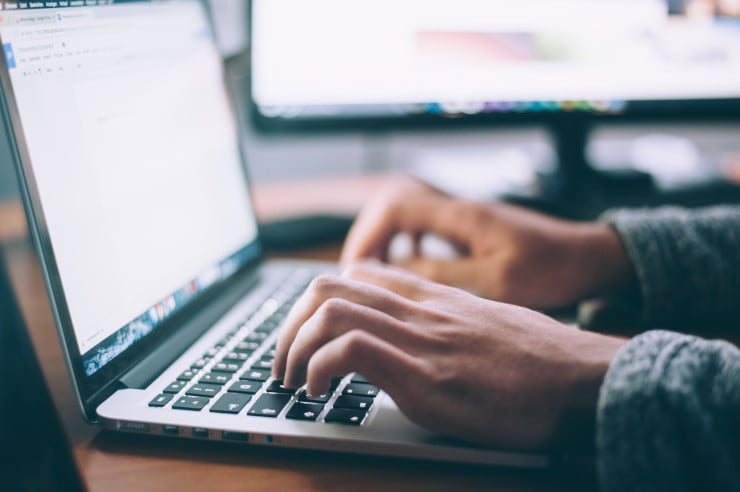Has your brand been hard at work producing content on social media with very little return on your investment? The problem may not be your content, it could be your hashtag strategy – or lack thereof. Hashtags might seem like a small part of the social media world, but they can actually act as a propellant to boost traffic and engagement on your accounts!
Read on for a step-by-step guide to develop your brand’s unique hashtag strategy.

What Is a Hashtag?
Hashtags are signifying terms that can be attached to social media posts. Users can select one or multiple words in a phrase to use as a hashtag. The selected words are placed after the pound (#) symbol and there are no spaces between words. Examples include, “#Hashtag” or “#ThisIsAHashtag”. The chosen hashtags should be related in some way to the content of the post. For instance, if a user has posted a photo of a cupcake display, the hashtag “#AtlantaCupcakeShop” is a relevant choice, while a hashtag such as “#ExtremeSports” is not a good choice.
Why Are Hashtags Important for Social Media?
Hashtags aren’t just fun add-ons for social media posts, their primary purpose is to increase the potential for other users to view, and interact with posts. By using hashtags that are relevant to the subject of your posts, the platform will include the post in the grouping of social media posts that appear when a user searches for that hashtag. Hashtags are a very important social media strategy to boost traffic and engagement!
How to Use Hashtags
As social media has evolved over the years so has the way in which it’s best advised to use hashtags. Originally, many folks on social media would sprinkle hashtags within their caption like this, “This is a #fun caption on #socialmedia about #hashtags”. This method makes captions look less clean and can often be challenging for users to read.
These days, however, as social media strategy has developed into a more defined area of marketing, there is a more standard method of hashtag inclusion. The best practice as of 2019 is to include hashtags all together at the end of a caption or in a separate comment immediately after posting. Here is an example of this hashtag usage:

Another frequently asked question is, “How many hashtags should I use?”. While technically, your only limit is Instagram’s character count on comments, it’s typically advised to use between 10 – 20 hashtags per post. If you only use one or two hashtags, you will limit your opportunities for traffic and engagement. On the flip side, attempting to fit 50 hashtags on a single social media post comes across a tad aggressive to users. One size doesn’t fit all, however, so experiment to find the ideal number of hashtags to include on your business’ social media posts.
How to Conduct Hashtag Research
Before diving in to select the hashtags you use on your social media posts, it’s critical that you conduct hashtag research. When you understand who your posts are directed to, and what hashtags they like to use, you can better curate your list of go-to hashtags to implement as part of your strategy. These are the steps to take when conducting hashtag research:
- Identify your target audiences and the hashtags they prefer to use, add these to your master list and include the number of existing posts that already use the hashtags.
- Identify key hashtags for your industry, niche, and any other related terms, add these to your master list and include the number of existing posts that already use the hashtags.
- Determine where your social media platforms stand in terms of strength compared with your competitors. Do their posts get more or less engagement than yours? Why might that be the case?
- Once you’ve accumulated a master list of hashtags and establish your standings against competitors, you can move on to determining your hashtag strategy.
How to Create Your Hashtag Strategy

Thought you were done after all that research? Unfortunately not! Just because you’ve found some relevant hashtags, it doesn’t mean that each one will actually be the most strategic choice! Depending on the size of your social media account and strength of the brand, using a very popular, frequently used hashtag won’t always be helpful to you.
Why? When you view a hashtag’s associated posts, there are two viewing options; “Top” and “Recent”. All posts will find their way into the “Recent” category based on when the post was released. Therefore, when you select a popular hashtag there are being assigned to the hashtag, your post will quickly be pushed down the list, meaning that it’s less likely that users will see your post amongst all the others.
To win a spot on the “Top” category, your post has to have one of the highest engagement rates compared with others using that hashtag. This is why you must be careful when using a popular hashtag with a high volume of posts. If you are a smaller account, your post will likely not win a spot in the “Top” category and only remain within easy access of the “Recent” category for a short period of time, resulting in less engagement for you! The exception to this is if your brand already has a huge following and your posts garner high ‘like’ counts already. If your brand is in this position, then your chances of finding success with a popular hashtag is more likely.
With this information in mind, along with understanding how the competitors in your niche market stack up, you can determine which of the popular hashtags to remove from your list. For most smaller brands, it’s recommended to primarily target hashtags with 100,000 or less existing posts. Even within that range, the 20,000 to 50,000 range is often most successful. Adjust your master list of hashtags accordingly.
Implementing and Evaluating a Hashtag Strategy

Once you’ve done your research and determined your hashtag strategy, it’s time to implement it! It’s important to document your hashtag findings as part of your brand’s social media guide if you have one. If not, consider creating one, or keep the files and strategy plan in an easily accessible file for any member of your team to use when working on social media efforts. After all, consistency is key in social media and hashtag strategies are no exception!
At the beginning of your implementation of these new hashtags, consider sticking to a select batch to start with. After several weeks, you can assess how well they’ve been working and test a new batch for comparison. Often, there’s no rhyme or reason to why certain hashtags work better than others, so experimentation is key to fine tuning your hashtag strategy for best results. As you analyze the results of your social media campaigns, including key hashtags in your reporting is a useful piece of data for your team or clients to be aware of!
What’s the most important step in your hashtag strategy? Let us know in the comments!




